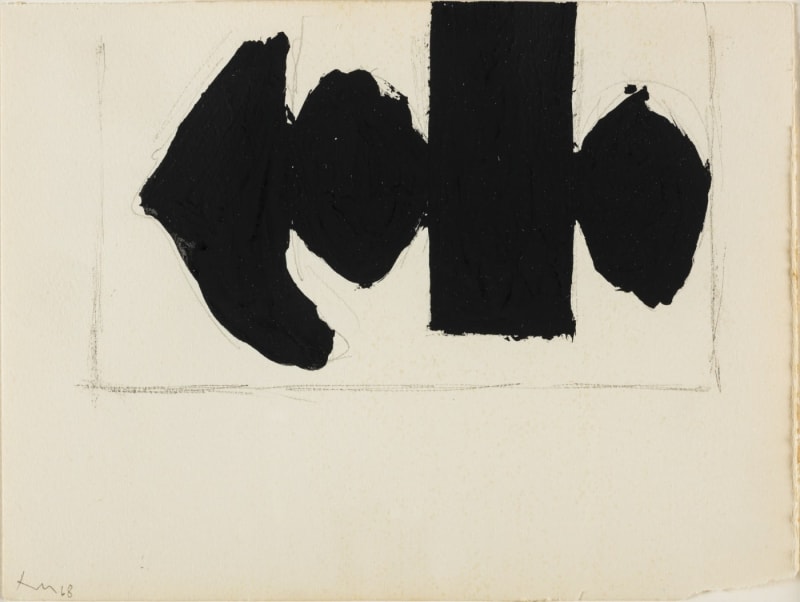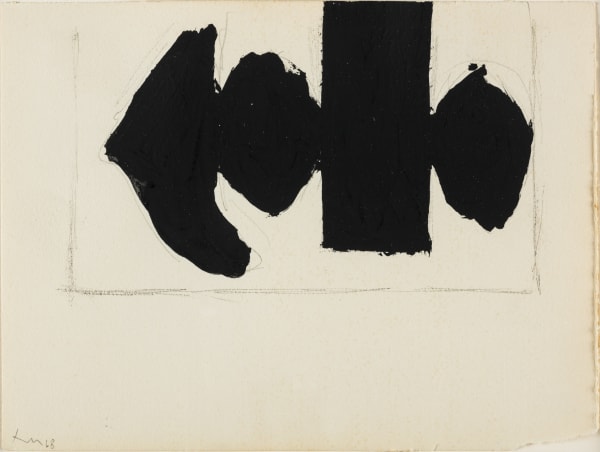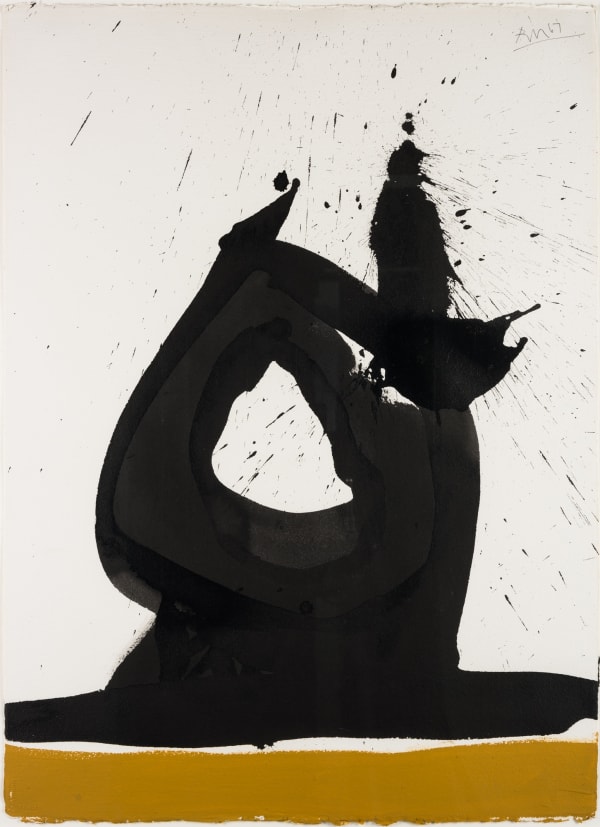Robert Motherwell United States, 1915-1991
Robert Motherwell (b. Washington, 1915, d. 1991) was one of the artists who led the first generation of Abstract Expressionism, representative of 20th century American contemporary art. Motherwell, who started to paint in earnest in the 1940s at the transition period when American modern art established itself as the mainstream of world art, contributed as a painter, author, planner, and critic in nearly all activities linked to modernism centering on New York City. In abstract art, Motherwell stressed subjectivity, its sensibility, and a feel for abstract structures over descriptions of the external world and of dedication to the language of painting itself over the superiority of human vision. In one of his representative series, Elegy to the Spanish Republic, a fundamental exploration of life and death appears as a strong contrast between black and white.
Robert Motherwell studied philosophy and French symbolist literature at Stanford University, received a doctoral degree from Harvard University and studied art history at Columbia University. In 1948, he established a school named “Subjects of the Artist” together with figures including Rothko and Barnett Newman in order to publicize abstract art. The title of his lecture in 1950 at the University of Louisville in Kentucky, “The New York School,” subsequently became a general term referring to the first generation of modern artists in the United States. Motherwell’s works can be found in major museum collections such as the Solomon R. Guggenheim Museum New York, Museum of Modern Art (MoMa), The Metropolitan Museum of Art, San Francisco Museum of Modern Art, Albright-Knox Art Gallery, National Museum of Art Washington, Basel Museum of Art, Hara Museum of Art, Tate, Barcelona Museum of Contemporary Art, Smithsonian Museum of Art, Ireland Museum of Contemporary Art, Paul Getty Museum of Art, and the Los Angeles Museum of Contemporary art.
-
 Robert MotherwellHomage to Catalonia, 1985Acrylic on canvas61 x 91.4 cm
Robert MotherwellHomage to Catalonia, 1985Acrylic on canvas61 x 91.4 cm -
 Robert MotherwellElegy Sketch, 1980-ca.1984Acrylic on canvas board15 x 29.5 cm
Robert MotherwellElegy Sketch, 1980-ca.1984Acrylic on canvas board15 x 29.5 cm -
 Robert MotherwellElegy to the SpanishRepublic No. 163, 1979-1982Acrylic and Conte crayonon board59.1 x 74.3 cm
Robert MotherwellElegy to the SpanishRepublic No. 163, 1979-1982Acrylic and Conte crayonon board59.1 x 74.3 cm -
 Robert MotherwellElegy to the Spanish Republic No. 130, 1974-1975Acrylic on canvas243.8 x 304.8 cm
Robert MotherwellElegy to the Spanish Republic No. 130, 1974-1975Acrylic on canvas243.8 x 304.8 cm -
 Robert MotherwellStudy for Elegy to theSpanish Republic No.110E, 1968Acrylic and graphite onpaper15.2 x 20.3 cm
Robert MotherwellStudy for Elegy to theSpanish Republic No.110E, 1968Acrylic and graphite onpaper15.2 x 20.3 cm -
 Robert MotherwellElegy to the SpanishRepublic No. 110C, 1968Acrylic and graphite on paper15.2 x 20.3 cm
Robert MotherwellElegy to the SpanishRepublic No. 110C, 1968Acrylic and graphite on paper15.2 x 20.3 cm -
 Robert MotherwellBlack Image with Ochre, 1967Acrylic and ink on paper77.5 x 55.9 cm
Robert MotherwellBlack Image with Ochre, 1967Acrylic and ink on paper77.5 x 55.9 cm -
 Robert MotherwellElegy to the Spanish Republic No. 60, 1960Oil on paperboard29.2 x 35.6 cm
Robert MotherwellElegy to the Spanish Republic No. 60, 1960Oil on paperboard29.2 x 35.6 cm -
 Robert MotherwellA View No. 1, 1958Oil on canvas206.1 x 264.2 cm
Robert MotherwellA View No. 1, 1958Oil on canvas206.1 x 264.2 cm











